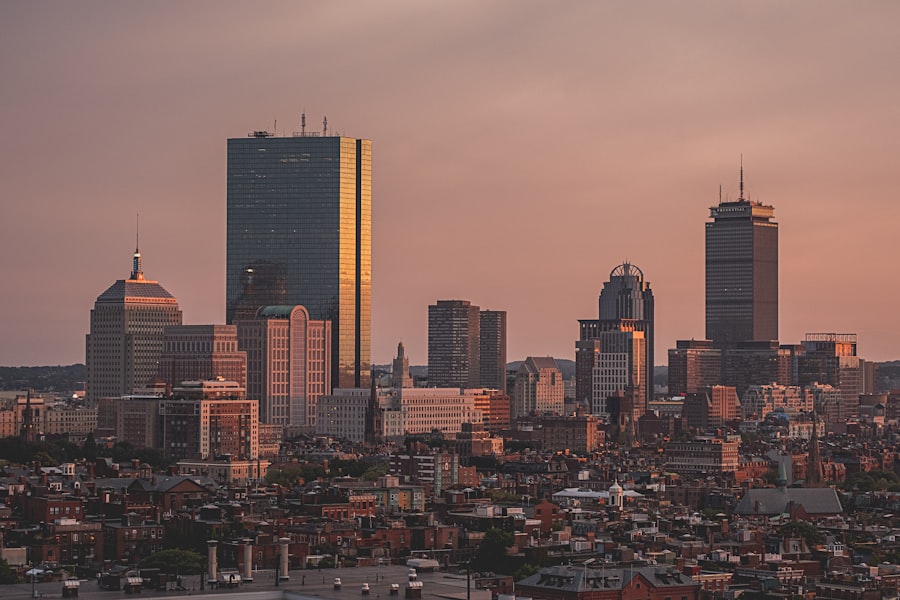The phenomenon of urbanization in India during British rule represents a significant chapter in the subcontinent’s history, characterized by profound transformations in social, economic, and political landscapes. The British colonial administration, driven by its imperial ambitions, initiated a series of policies that catalyzed the growth of urban centers across India. This period, spanning from the late 18th century to the mid-20th century, saw cities evolve from traditional hubs of commerce and culture into modern urban landscapes influenced by Western ideologies and practices.
The influx of British administrative systems, coupled with the introduction of new technologies and infrastructure, fundamentally altered the dynamics of urban life. Urbanization under British rule was not merely a byproduct of colonial governance; it was a deliberate strategy aimed at consolidating power and facilitating resource extraction. The British sought to create urban centers that could serve as administrative capitals, trade hubs, and military outposts.
Cities like Calcutta (now Kolkata), Bombay (now Mumbai), and Madras (now Chennai) emerged as focal points of colonial activity, reflecting the intersection of indigenous traditions and colonial aspirations. This transformation was marked by the establishment of new institutions, the introduction of Western education, and the migration of people from rural areas to urban centers in search of better opportunities.
Key Takeaways
- Urbanization under British rule saw a significant increase in the growth and development of cities in India.
- The impact of British rule on urbanization led to the transformation of cities with the introduction of new industries, transportation systems, and administrative structures.
- The development of urban infrastructure during British rule included the construction of railways, roads, bridges, and modern sanitation systems.
- Social and economic changes in urban areas under British rule included the emergence of a new middle class, changes in land ownership, and the growth of trade and commerce.
- Resistance and opposition to British urbanization policies were evident through movements and protests against land acquisition, displacement of local communities, and exploitation of labor.
- The legacy of British urbanization in modern cities can be seen in the architectural landmarks, transportation systems, and administrative structures that continue to shape urban landscapes in India.
Impact of British Rule on Urbanization
The impact of British rule on urbanization in India was multifaceted, leading to both positive and negative consequences. On one hand, the British introduced modern infrastructure such as railways, roads, and ports, which facilitated trade and mobility.
This connectivity not only stimulated economic growth but also contributed to the emergence of a national consciousness among Indians. The railways became a symbol of modernity and progress, albeit one that served colonial interests. Conversely, the rapid urbanization brought about by British policies also led to significant social upheaval.
The influx of migrants into cities resulted in overcrowding, inadequate housing, and strained public services. Urban areas became breeding grounds for poverty and disease as traditional social structures disintegrated under the pressures of modernization. The British administration often prioritized the needs of colonial officials and expatriates over those of the local population, leading to stark inequalities in access to resources and opportunities.
This duality of progress and deprivation encapsulates the complex legacy of urbanization during this period.
Development of Urban Infrastructure

The development of urban infrastructure during British rule was a cornerstone of colonial policy aimed at facilitating governance and economic exploitation. The British invested heavily in constructing roads, railways, ports, and telecommunication systems that would enhance their control over Indian territories. For example, the construction of the East Indian Railway Company in the mid-19th century revolutionized transportation in India, allowing for the efficient movement of raw materials from rural areas to ports for export.
This infrastructure not only served colonial interests but also laid the groundwork for future economic development in post-independence India. In addition to transportation networks, urban infrastructure included the establishment of civic amenities such as water supply systems, sewage disposal, and public health facilities. The introduction of modern sanitation practices was a response to the rampant spread of diseases like cholera and plague in densely populated cities.
The British implemented measures such as drainage systems and public health campaigns aimed at controlling epidemics. However, these initiatives were often limited in scope and primarily focused on maintaining the health of European residents rather than addressing the needs of the broader Indian population.
Social and Economic Changes in Urban Areas
The social fabric of urban areas underwent significant changes during British rule as traditional ways of life were disrupted by colonial policies. The migration from rural to urban settings led to a demographic shift that transformed cities into melting pots of diverse cultures and communities. This influx included not only laborers seeking employment but also professionals, traders, and intellectuals who contributed to a burgeoning urban middle class.
The emergence of this middle class played a crucial role in shaping new social dynamics and fostering a sense of nationalism among Indians. Economically, urban areas became centers of industrial activity as British policies encouraged the establishment of factories and manufacturing units. The textile industry, for instance, saw significant growth with the establishment of mills in cities like Ahmedabad and Bombay.
However, this industrialization was often exploitative; workers faced long hours, low wages, and poor working conditions. The economic benefits accrued from these industries primarily flowed to British investors rather than local communities. As a result, while urbanization created new economic opportunities, it also entrenched social inequalities that would have lasting repercussions.
Resistance and Opposition to British Urbanization Policies
The rapid urbanization under British rule did not go unchallenged; various forms of resistance emerged as Indians grappled with the socio-economic changes imposed by colonial policies. Intellectuals and activists began to critique the detrimental effects of urbanization on traditional lifestyles and local economies. Movements advocating for workers’ rights gained momentum in response to exploitative labor practices in factories.
Trade unions began to form in cities like Bombay during the early 20th century, demanding better wages and working conditions for laborers. Moreover, cultural movements arose as a counter-narrative to colonial urbanization. The Swadeshi Movement, which emerged in response to British economic policies, encouraged Indians to boycott foreign goods and promote indigenous industries.
This movement not only sought economic self-sufficiency but also aimed to reclaim cultural identity amidst the onslaught of Western influences in urban centers. Such resistance highlighted the growing awareness among Indians regarding their rights and aspirations in an increasingly modernized society.
Legacy of British Urbanization in Modern Cities

The legacy of British urbanization is evident in contemporary Indian cities, where colonial influences continue to shape urban landscapes and governance structures. Many major cities retain architectural features from the colonial era, such as Victorian-era buildings in Mumbai or Raj-era structures in Delhi. These remnants serve as reminders of a complex history that intertwines colonial ambition with local resilience.
Furthermore, the infrastructural developments initiated during British rule laid the foundation for post-independence urban planning efforts. While modern Indian cities have evolved significantly since independence in 1947, challenges such as overcrowding, inadequate public services, and socio-economic disparities persist—issues that can be traced back to colonial policies that prioritized certain populations over others. The ongoing struggle for equitable urban development reflects a legacy that continues to influence contemporary debates on governance, social justice, and economic opportunity within India’s rapidly urbanizing landscape.
In conclusion, understanding urbanization under British rule requires a nuanced examination of its impacts on society and economy while recognizing both its transformative potential and its inherent contradictions. The interplay between colonial ambitions and local responses shaped not only the cities of that era but also laid the groundwork for ongoing challenges faced by modern urban India today.
For a deeper understanding of the impact of urbanization on society, one can explore the article on Plato’s knowledge and opinion theory of forms and justice. This article delves into the philosophical concepts that shaped ancient Greek society and how they continue to influence modern thought. By examining the relationship between knowledge, opinion, and justice, readers can gain insight into the complexities of urban development and governance. To read more about this fascinating topic, visit com/platonic-philosophy-platos-knowledge-and-opinion-theory-of-forms-and-justice/’>Plato’s Knowledge and Opinion Theory of Forms and Justice.
FAQs
What is urbanization?
Urbanization refers to the process of population concentration in urban areas, leading to the growth of cities and towns.
How did urbanization change under British rule?
Urbanization under British rule in India saw a significant increase in the growth and development of cities and towns, as the British established administrative centers, trading posts, and industrial hubs.
What were the key factors driving urbanization under British rule?
Key factors driving urbanization under British rule included the establishment of colonial administrative centers, the development of transportation and communication networks, and the growth of industries and trade.
What were the social and economic impacts of urbanization under British rule?
Urbanization under British rule led to significant social and economic changes, including the growth of a middle class, the emergence of new social and cultural practices, and the development of industries and commercial activities.
How did urban planning and infrastructure develop under British rule?
Urban planning and infrastructure development under British rule focused on creating administrative and commercial centers, improving transportation and communication networks, and establishing public amenities such as water supply, sanitation, and healthcare facilities.
What were the challenges and criticisms of urbanization under British rule?
Challenges and criticisms of urbanization under British rule included the displacement of local communities, the exploitation of natural resources, and the unequal distribution of wealth and resources between urban and rural areas.






















+ There are no comments
Add yours